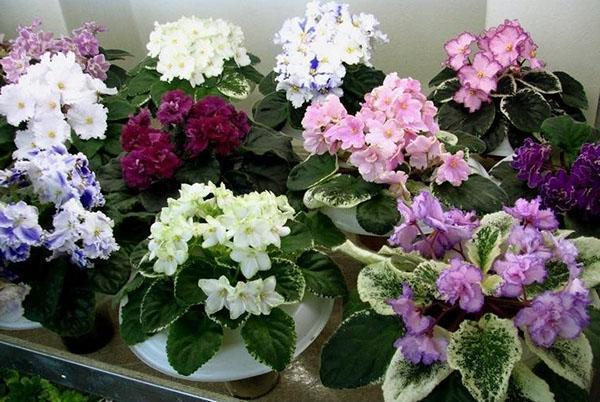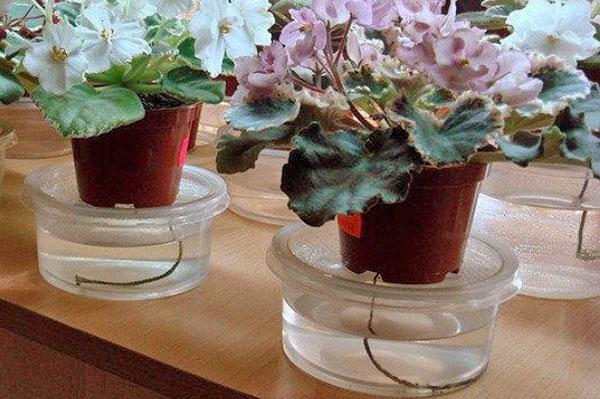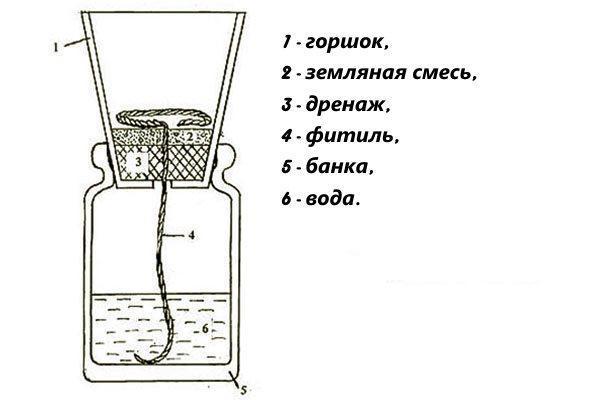The subtleties of caring for Saintpaulia at home
 Indoor violets are compact, beautiful blooming plants all year round. Saintpaulia does not require special care at home. However, it is necessary to provide content for better flowering. Among the wide variety of varieties, it is easy to find the most suitable one. There are even mini plants that are placed in the back of the room on shelves with artificial lighting. Usambara violets or saintpaulias have long been used in home floriculture under the general definition of indoor violets. These also include ampelous Saintpaulias.
Indoor violets are compact, beautiful blooming plants all year round. Saintpaulia does not require special care at home. However, it is necessary to provide content for better flowering. Among the wide variety of varieties, it is easy to find the most suitable one. There are even mini plants that are placed in the back of the room on shelves with artificial lighting. Usambara violets or saintpaulias have long been used in home floriculture under the general definition of indoor violets. These also include ampelous Saintpaulias.
Read also the article: meadowsweet is a perennial plant!
Caring for home violets
Proper care of Saintpaulia is about choosing a place. You need to put a planter with a room violet where there is continuous lighting. Direct sunlight should not touch the plant. Plants should be placed on the window so that the leaf blade does not have contact with the glass.
Among the Saintpaulias, the most interesting are chimeras. They are unique in shape and color. Chimeras breed unconventionally. Plants are distinguished by the color of the leaves, like boys and girls. The first chimeras appeared as partial mutants. Each of the plants contains normal and altered cells in layers.
Care and cultivation of Saintpaulia depends on the correct composition of the soil. The flower mix is available from the store. You can prepare the substrate yourself.
- turf - 3 parts;
- leaf land - 2 parts;
- coniferous and peat land in 1 part.
Pieces of charcoal and clean sand are added to the ground. For drainage, expanded clay and polystyrene are used as neutral materials. Overflow and lack of moisture are equally poorly tolerated by violets. Therefore, the violet, like no other flower, needs a uniform, dosed supply of water.
Wick watering for Saintpaulias we will analyze step by step

- a pot with a diameter of nm 2 cm is larger than the one in which the plant is located.
- a container for water with a solution of low concentration fertilizers;
- synthetic wick, but with good hygroscopicity;
- a pot with holes and a drainage layer;
- breathable light soil.
 To create a capillary irrigation system, you must use the proposed schematic diagram:
To create a capillary irrigation system, you must use the proposed schematic diagram:
- Take a 20 cm piece of cord 1-5 mm in diameter, pass it through the drainage layer and place it in a ring over a thin layer of the poured substrate.
- Remove the Saintpaulia with a lump of earth from the old pot and place it in a new container, pouring a mixture of perlite with sand around.
- Compact the soil around the plant by gently wetting with a pipette.
Wick irrigation start only after the plant has taken root. The first time you need to moisten the wick, then water flows through the capillaries of the cord.
You can adjust the amount of water by measuring the flow per day. If the lump of earth is too wet, the wick needs to be taken thinner. To avoid replanting the plant, you can remove one of the woven strips. The picture shows a nest for a transplanted plant. It is formed from a plant cup.
 Wick regulated irrigation is very convenient. Several specimens can be watered from one container. At the same time, the leaves are not wetted, the calculated amount of fertilizer for Saintpaulia, when leaving at home, is dosed to the roots.
Wick regulated irrigation is very convenient. Several specimens can be watered from one container. At the same time, the leaves are not wetted, the calculated amount of fertilizer for Saintpaulia, when leaving at home, is dosed to the roots.
Plant feeding and transplanting
Saintpaulia should not be fed with fresh organic fertilizers. Used once every 2 weeks complex mineral compositions for feeding flowers. 3-4 grams are diluted per liter and an earthen lump is watered with this solution. Excess fertilization stops the violet from blooming. They love violets if they create a fog over them with a fine spray on leaves and flowers. But large drops are harmful to the leaves. Fluffy leaves collect dust and once a month Saintpaulia needs to be bathed under a warm shower. After the sheets have dried, the plant is placed in its original place.
Many flower lovers allocate space for violets in the back of the apartment on special shelves with lighting. Plants are collected by variety, color, size. The best specimens are presented at the annual Saintpaulia exhibition.
The soil is compacted and depleted in 2 years and fertilization does not give the desired effect. Then a transplant is needed. The new pot should be only 2 cm larger. The plant does not bloom until it fills the void with roots. The transshipment will be a gentle way, it is described above. On the plant, you need to remove the peduncles so as not to load the root system.
During the transplant, a revision of the roots is made, the stepchildren's rosettes are separated on the Saintpaulia for vegetative propagation. Spring is a good time for surgery.
Propagation of Saintpaulia by petioles
 A healthy mature leaf is suitable for reproduction with a petiole, which is cut with a scalpel with a petiole obliquely. The cut is dried in air. The petiole should be no longer than 4 cm. Boiled water, wet sphagnum moss, vermiculite with sand or perlite are suitable for rooting. In any case, during rooting, the leaf should be surrounded by a humid atmosphere, diffused light and heat. The best rooting time is from May to August.
A healthy mature leaf is suitable for reproduction with a petiole, which is cut with a scalpel with a petiole obliquely. The cut is dried in air. The petiole should be no longer than 4 cm. Boiled water, wet sphagnum moss, vermiculite with sand or perlite are suitable for rooting. In any case, during rooting, the leaf should be surrounded by a humid atmosphere, diffused light and heat. The best rooting time is from May to August.
The cuttings that have produced about 2 cm roots are planted in light soil and a greenhouse is built with daily ventilation. After a month, each cutting will have several outlets. They are grown up to 3 cm and seated in separate cups in permanent soil. Care for young Saintpaulias at home is carried out carefully. The volume of the earth is already very small, and it cannot be allowed to dry out.
 There are times when the leaf itself begins to grow instead of the baby, then it is cut off by a third and the process continues. Sometimes in a glass with a stem, the water becomes cloudy. It is necessary to rinse the petiole and change the water. Cut off the rotten tip, put the petiole back on germination.
There are times when the leaf itself begins to grow instead of the baby, then it is cut off by a third and the process continues. Sometimes in a glass with a stem, the water becomes cloudy. It is necessary to rinse the petiole and change the water. Cut off the rotten tip, put the petiole back on germination.